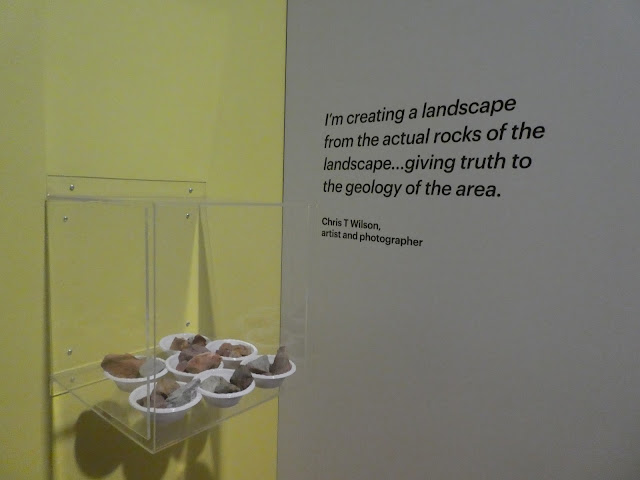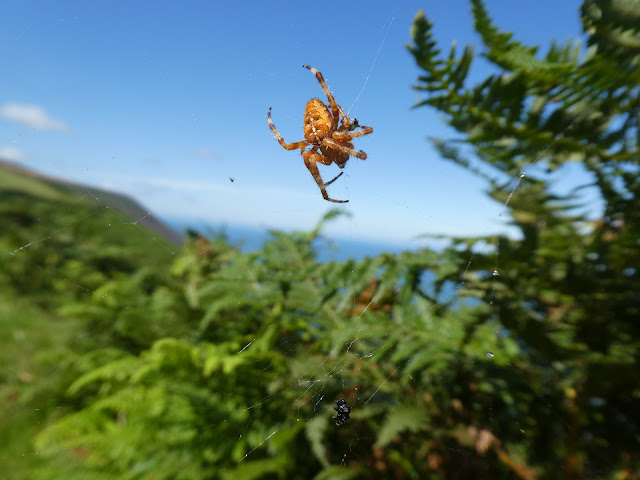There were waterfalls everywhere, tumbling over rocks to the road as I drove up the 99 bends and tiny minature waterfalls beside the board-walked track that clings precariously to the side of Mt Owen, the bare pink conglomerate massif that towers over the town of Queenstown in the valley below. Surrounded by the sound of water.
But this is why I stopped and walked into the wind and rain - Horsetail Falls in all its roaring majesty, over 50 metres in full flow - very impressive, and an easy 500 metres along the boardwalk from the carpark.
Delicate ever-morphing patterns and the incredible power of water flowing over the angled ancient rocks. How can you not be impressed and mesmerized?
Back at the carpark, I ate my lunch cloistered in Sally, my campervan - the one with the purple and blue 'racing' stripes, the wind vibrating and shaking. White quartz runs through pink Mt Owen conglomerate.
In Hobart, the museum currently has a fascinating exhibition. 'On the edge of the world lies a distinctive, complex and compelling place...'
Four rooms covering the geologic, natural, human, industrial and inspirational elements of this western edge. First People's creation stories, geology, industry and mining, and much more.
'Inspired by the West' - My parents' had a orange tent like this one, owned by famous wilderness photographer, Olegas Truchanas.
Early wilderness photography.
And current artists. Did you know that a few years ago there were three art galleries in Queenstown? Now, there are ten! And two bookshops! And a couple of new cafes.
The West truly is a sublime and inspiring place.
A section of Raymond Arnold's 'Elsewhere World' juxtaposed with my photos of a King Billy pine stump, and Horsetail Falls. Nature reasserts itself after our environmental vandalism.
Do yourself a favour - go and see West Out on the Edge, on at TMAG until May 10, 2020. And then - embrace the water and the wildness, and go west!






































